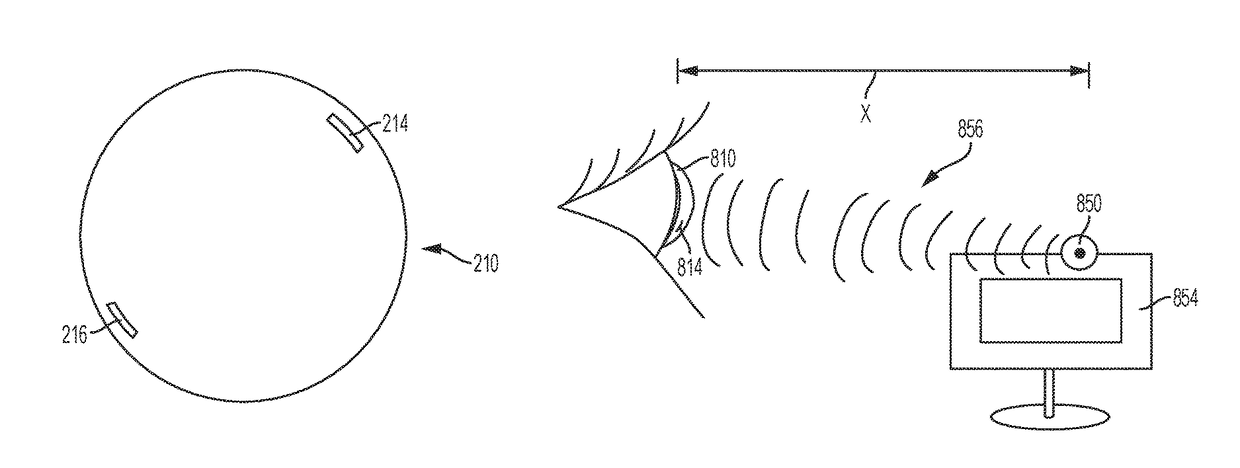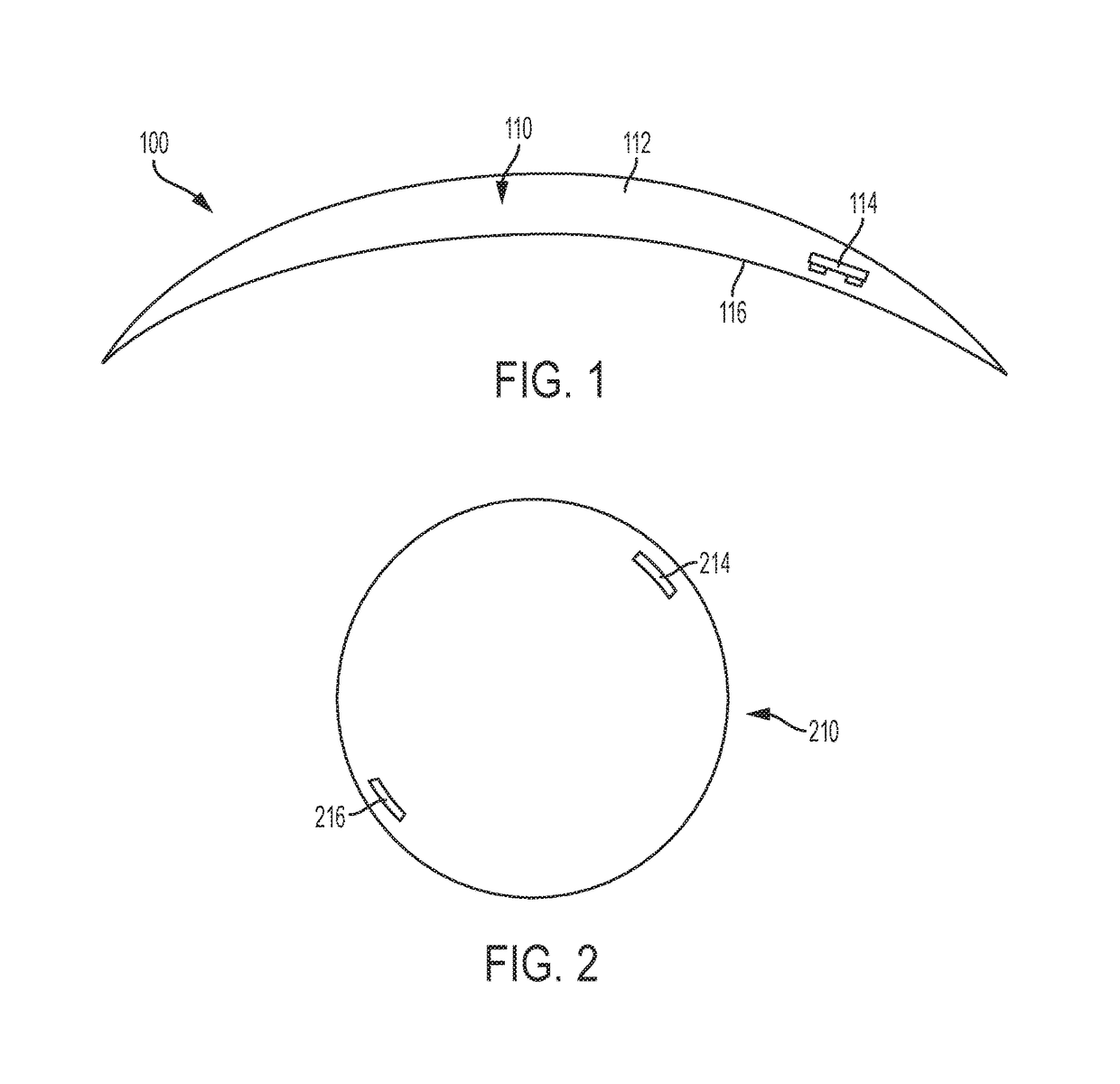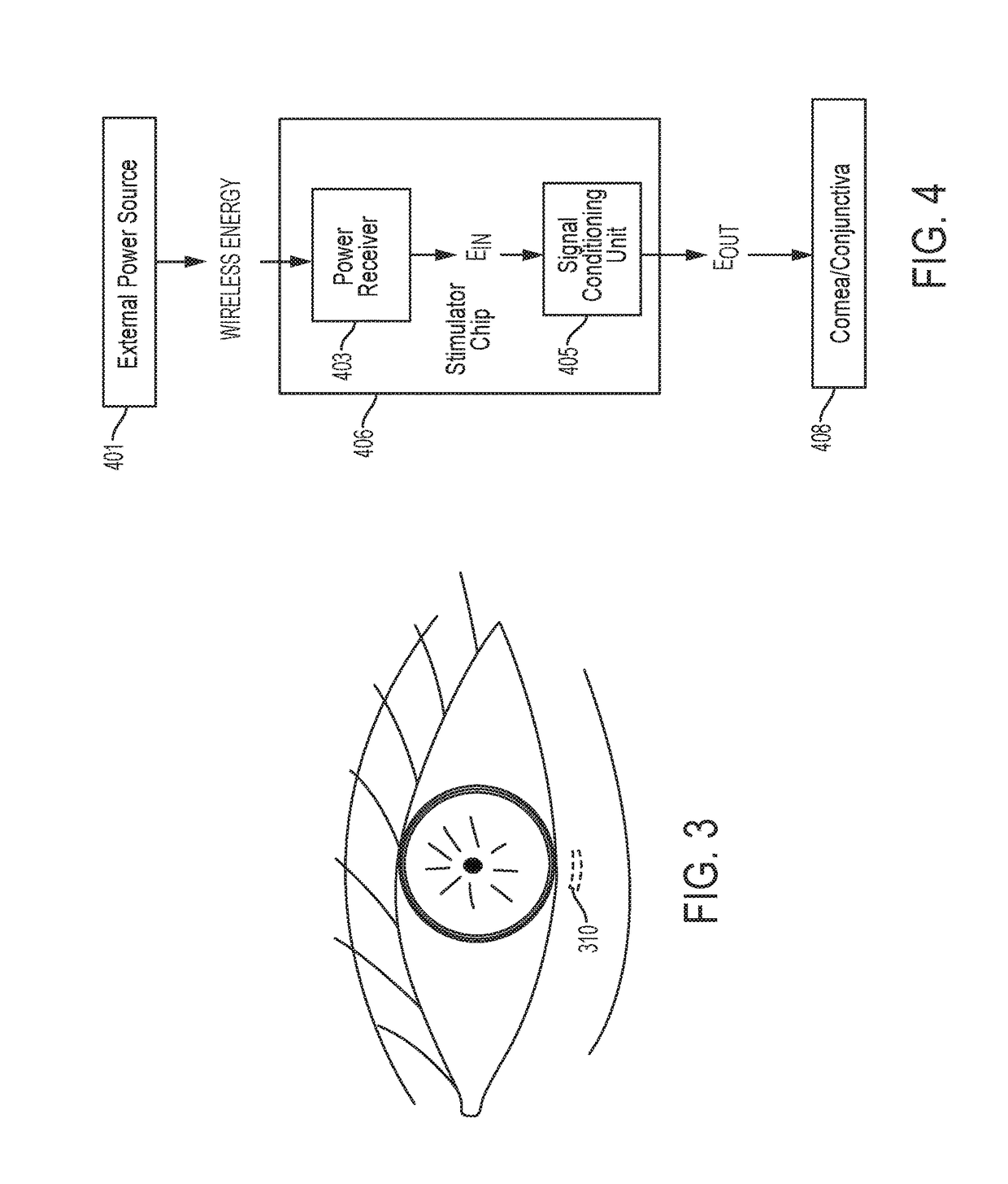Contact lens for increasing tear production
a contact lens and tear film technology, applied in the field of contact lenses for increasing tear film production, can solve the problems of reduced vision-related quality of life, visual disturbance, ocular discomfort, etc., and achieve the effect of increasing tear film, increasing tear film, and increasing tear film
- Summary
- Abstract
- Description
- Claims
- Application Information
AI Technical Summary
Benefits of technology
Problems solved by technology
Method used
Image
Examples
Embodiment Construction
[0029]Described here are devices, systems, and methods for increasing tear production by stimulating the cornea, conjunctiva, and / or subconjunctiva. The device may be a contact lens or an implantable device, which may comprise a stimulator chip. The system may comprise the contact lens or implantable device and an external power source that may wirelessly transmit energy to the stimulator chip. The stimulator chip may convert the energy transmitted to an electric waveform, which may be delivered to a subject to electrically stimulate the cornea, conjunctiva, and / or subconjunctiva. This may in turn activate the reflex pathways and increase tear production.
[0030]The devices and systems for increasing tear production described here may be used in methods of treating dry eye caused by clinical and / or external factors. They may also be used in methods of reducing the symptoms of tired eye, increasing comfort for contact lens wearers, and extending the number of years a contact lens user ...
PUM
 Login to View More
Login to View More Abstract
Description
Claims
Application Information
 Login to View More
Login to View More - R&D
- Intellectual Property
- Life Sciences
- Materials
- Tech Scout
- Unparalleled Data Quality
- Higher Quality Content
- 60% Fewer Hallucinations
Browse by: Latest US Patents, China's latest patents, Technical Efficacy Thesaurus, Application Domain, Technology Topic, Popular Technical Reports.
© 2025 PatSnap. All rights reserved.Legal|Privacy policy|Modern Slavery Act Transparency Statement|Sitemap|About US| Contact US: help@patsnap.com



